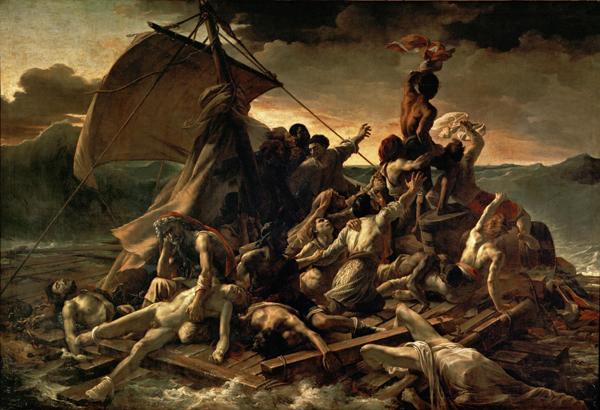Does fine art still have political teeth? Remember, if you will, such historical examples as Delacroix’s ‘Victory Leading the People’, the cautionary tales of corruption by Hogarth, or the savage cartoons of James Gillray, to pluck from the vast array of politically charged fine art. Yet as a medium for change it has effectively died a death: when was the last time a ‘serious’ painting, sculpture or installation bore real potent power, in the ways that David’s ‘Death of Marat’ or ‘Oath of the Tennis Courts’ did? (See also, French Revolution..) Certainly, you can look to any newspaper for the amusing commentary by excellent Gillrays of their era: Steve Bell, Gerald Scarfe, Martin Rowson. Except these are commentary only, plonked firmly in the largely inconsequential ‘Comment’ section. (Yes, ‘Comment is Free’ is democracy in action, but really people are venting constructive ideas/vitriol/contributions into the ether.) The UK government at least have so distanced themselves from the arts as a language and lifeblood of society that fine art really has become a toothless commodity, sealed off from any political involvement and thoroughly impotent when it comes to actually inspiring change.
Along with savage cuts right left and centre – see also: mass exodus of museum directors to other, less restrictive roles abroad – where, as Artlyst have found, only the Green party seem turned on to the importance of ‘wishy washy liberal arts’, less importance is attached to fine art as anything other than wall decoration. Walk past Millbank tower, head of Tory HQ, and you’ll see in the lobby the finest of Damien Hirst’s empty meaningless spin skull paintings and a Warhol print, demonstrating more than anything a lack of imagination and a total dependence on tried and tested big ‘names’. It’s a shame, therefore, that despite the deep and cutting political message informing most of Banksy’s graffiti art, we’re only really hyped for his saleable name: the affecting moral and political message is a secondary benefit. If the birth of democracy in 5th Century BC Greece was represented by the development of the naturalistic representation of the nude in art, we have no equivalent other than bawdy Private Eye one-liner visual jokes.
The issue boils down to the two factors above: a preponderance by the wealthy on the monetary value of culture (i.e. art is increasingly becoming for the 1% only), combined with savage cuts starving creativity. I am not arguing for directly commissioned politically funded works: in principle alone this is the thin end of the wedge that ends with the shite produced by Nazi Germany. But at present the only really charged pieces of art are stuck in the periphery – like an outsider pressure group struggles to lobby politicians unless extremely pally with their inner circle – as seen in the great work by the Guerilla Girls. I don’t believe there is a happy medium between the two positions: the solution remains to foster emerging arts with the funding it needs. Privatising security at the National isn’t the issue here: it’s a more general and overbearing sweeping disregard for the importance of heritage and visual arts from above.
artbytch@artlyst.com © 2015 all rights reserved

